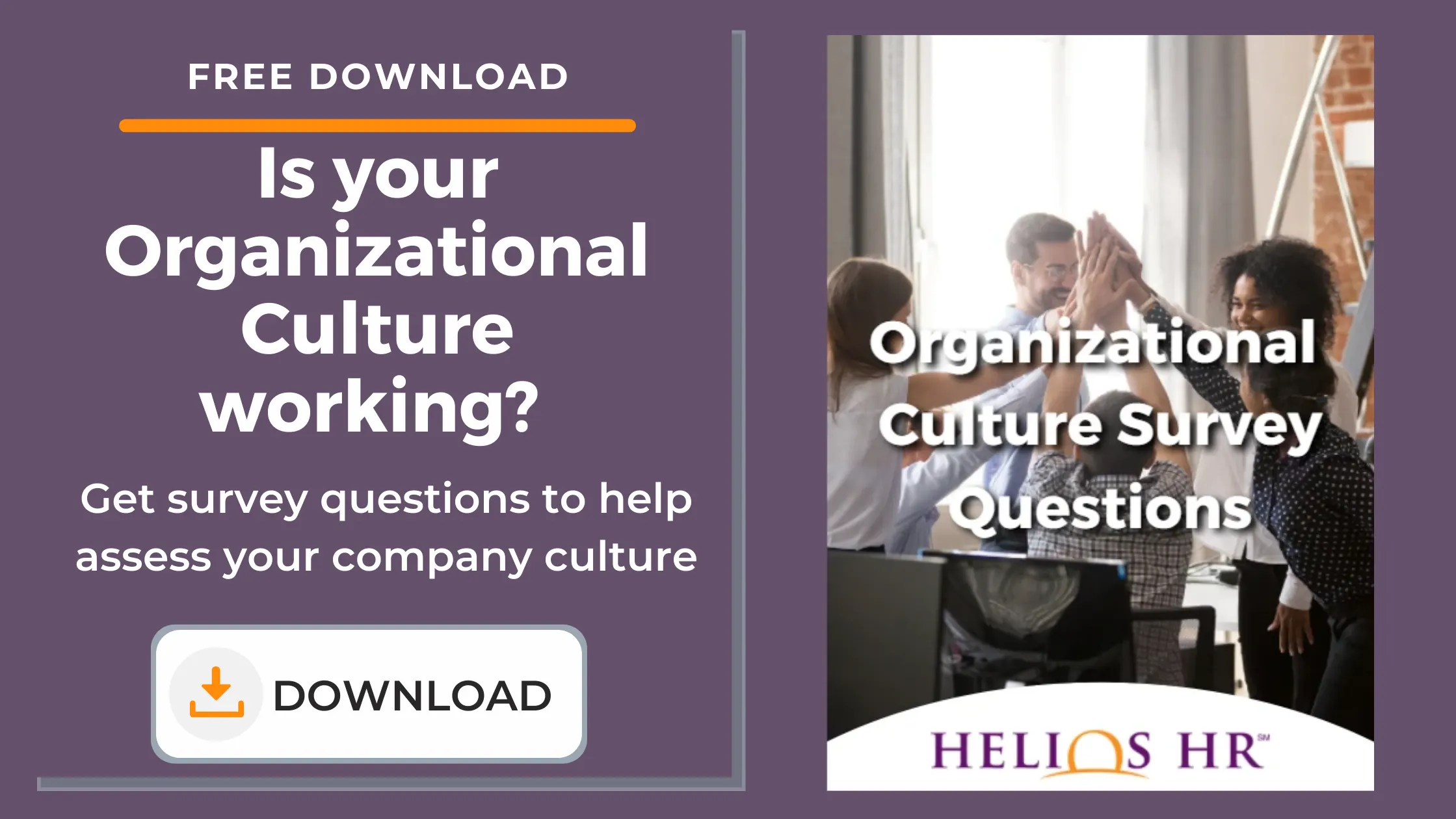By: Amber Pereira on February 7th, 2022
How to Identify and Fix a Toxic Culture at Work
A positive culture can be the engine that drives your success. People thrive in an atmosphere of support and encouragement, which inspires them to innovate and exceed your expectations.
On the other hand, a toxic culture can be a liability. If your team are working in a gloomy, hostile, or negative environment, they will find it hard to concentrate on the things that matter.
This kind of atmosphere creates stress and anxiety, which makes it hard for employees to engage with their work. Over time, a toxic culture can lead to higher staff turnover – and an extremely toxic culture may even lead to lawsuits.
- What is a toxic culture?
- How do you know if a culture is toxic?
- What causes toxic work culture?
- How do you change a negative work culture?
- Getting help to build a thriving culture
What is a toxic culture?
A toxic workplace culture is a working environment where people feel uncomfortable, unwelcome, or unable to focus. Toxic cultures result from structural problems, such as overwork, bad communication, or poor HR processes.
From an employee’s point of view, a toxic culture can take many forms. Your team members might complain about experiencing any of the following toxic work culture examples:
- Cliques: Closed groups that isolate other team members
- Discrimination: Unfair treatment because of things like race, age or gender
- Alienation: Team members fail to form interpersonal bonds
- Silos: Individual teams that act as a company-within-a-company
- Non-cooperation: Colleagues failing to assist each other on tasks
- Harassment: Workplace bullying or abuse against team members
Any of the above could be a sign of a toxic work environment. But many of these problems are only visible when you’re in the office, among the team. For senior leaders and HR professionals, the symptoms of a toxic culture might appear much later.
How do you know if a culture is toxic?
There’s an old saying: “every unhappy family is unhappy in its own way”. The same applies to toxic work cultures, where the toxicity can take a multitude of forms.
There are some common red flags that you’ll see in any organization, such as:
Unfocused Employees
A toxic culture may cause employees to lose focus and become distracted at work. They may not feel as motivated to work, causing their productivity level could plummet. You may also see lower customer satisfaction due to errors and rework.
Communication Problems
A toxic environment can impair many key components to success, one of the most costly being communication. Certain employees may not want to communicate with others they deem toxic, causing a communication breakdown and lack of cooperation.
Bad Reputation
Eventually, word will get around about your toxic workplace culture. Disgruntled employees may leave bad reviews on websites such as Glassdoor, or they may simply gossip with peers. Either way, a toxic environment could cost an organization its positive reputation. Ideal candidates may not apply for openings, and high-performing employees may not be able to withstand the negative environment.
Staff turnover
When people dislike their colleagues, they are far more likely to seek a change. This results in higher employee turnover, which results in greater expenditure on recruiting, training and retaining employees.
Toxic subcultures and countercultures
Organizational cultures will often fragment into smaller subcultures. This is not necessarily a problem, unless those subcultures are not aligned with the primary culture. In some cases, companies might have a counterculture that actively works against
Employee Lawsuits
Sometimes, a working environment can be so hostile that employees feel that they need to take legal action. This is especially common in workplaces where there is harassment, bullying or discrimination – especially if the HR team has failed to act on such issues.
What causes toxic work culture?
Toxic company culture is often a symptom of more deep-rooted organizational problems. Some of the more common issues include:
1. Overwork
When people are overburdened with tasks, it can lead to stress and burnout. This stress can make people behave defensively, which can come across as hostility. In the long run, stress can cause interpersonal friction that undermines your whole culture.
2. Lack of recognition
In a positive culture, people celebrate their colleagues’ successes. But what happens when people don’t feel that their own successes are receiving suitable recognition? In some cultures, this may lead to an unhealthy sense of competition. In others, it may simply cause people to disengage.
3. Unclear focus
Teams are at their best when they’re all pulling in the same direction. When the direction is unclear, people will start to argue about what to prioritize, which leads to tension and breaking into silos.
4. Inconsistent values
Your company’s values should be at the heart of everything you do. This is one of the pillars of a strong corporate culture. When employees can’t see your values, they won’t be able to live your values on a day-to-day basis, and without strong values, your culture will become confused and fragmented.
5. Bad examples at the top
Employees look to leaders for social cues. If the senior leadership is respectful, principled, and honest, employees will usually behave the same way. But when senior leaders display toxic traits, those traits will soon become the norm for the rest of the team.
6. Lack of HR expertise
Strong HR processes can help to stamp out negative behaviors, while also encouraging people to support and respect their colleagues. Toxic work cultures often emerge when the HR team is stretched thin and lacks the resources to focus on cultural issues.
Related reading: How to Build a Thriving Organizational Culture
How do you change a negative work culture?
Identifying a toxic work culture is the first step towards a more positive working environment. Once you identify a problem – and you know how that problem affects your team – you can start taking steps to remedy it.
Realigning an organizational culture can take a lot of time and effort. Here are the main steps you should follow:
1. Acknowledge the issues
It can be powerful to hear your employer that, yes, some aspects of the workplace culture have become toxic. A public acknowledgment will reassure employees that you understand the issue, and that you’re working on it.
2. Get leadership buy-in
Senior leaders need to understand the role they play in organizational culture. Leaders not only need to support the HR team’s culture strategy, but they also need to set a positive example for the rest of the company. Talk to your leadership team about employee engagement and retention, which both suffer greatly in a toxic culture.
3. Restate your values
Most companies start out with a positive culture. Small teams understand the strategy and the values behind the company’s mission, and they see how their efforts must align with those values. If your culture has turned toxic, it might be time to restate some of those values and remind people of what the company is trying to achieve.
4. Find the drivers of your toxic culture
In the previous section, you may have recognized some problems in your organization, such as overwork or lack of recognition. Your culture will never improve unless you tackle these structural issues. Again, you’ll need leadership buy-in to help you create a less negative work environment.
5. Keep measuring and monitoring
Even if you think you have a positive culture, it’s always a good idea to monitor current levels of satisfaction. Use pulse surveys, one-to-one feedback sessions, and focus groups to get a better insight into your culture’s current state. If you’re having an issue with staff turnover, use stay interviews and exit interviews to gather data on the root causes.
Getting help to build a thriving culture
Your HR team plays a vital role in promoting a thriving organizational culture. When that HR team is under-resourced or inexperienced, things can go wrong, and you may find yourself dealing with a toxic work culture.
That’s why it’s a good idea to bring in expert help. Set up a no-obligation call with a Helios HR consultant, and let’s talk about how we can help you build an amazing team culture.





